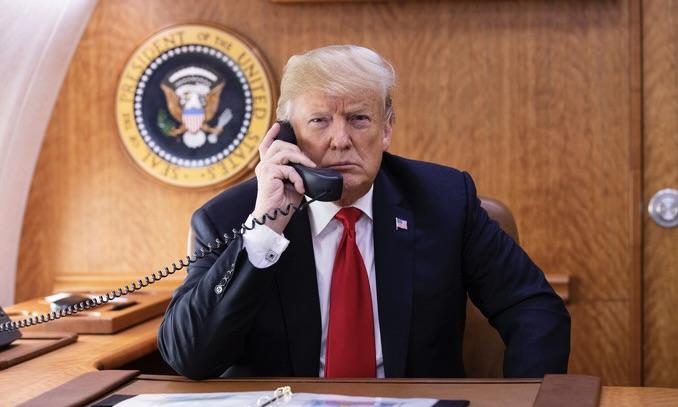Donald Trump’s return to the political stage as president in 2025 has reignited national conversations about political division and unity in the United States. With his administration promising bold reforms, Trump faces the daunting challenge of bridging a deeply polarized nation. While supporters rally behind his leadership, critics question his ability to foster unity amidst ongoing partisan strife.
Trump’s campaign rhetoric and early policy proposals suggest an aggressive focus on economic growth, immigration reform, and cultural issues. However, many argue that addressing political polarization requires more than legislative action—it demands meaningful dialogue and compromise, which have proven elusive in recent years.
A Nation Divided: Trump’s Approach to Polarization
The United States remains deeply divided along political lines, a trend exacerbated by social media, cable news, and partisan politics. Trump’s critics argue that his often combative rhetoric contributes to the problem, while his supporters see him as a necessary disruptor of the status quo.
In his inaugural address, Trump acknowledged the need for unity, stating that “a divided nation cannot achieve greatness.” However, his early executive orders—such as stricter immigration controls and policies aimed at bolstering domestic manufacturing—have drawn sharp reactions from both sides of the aisle.
Political analysts suggest that Trump’s focus on tangible economic benefits, like job creation and tax relief, may resonate with voters across party lines. Yet, his handling of cultural and social issues, including education and healthcare, remains a polarizing aspect of his presidency.
Critics Call for Dialogue and Compromise
Opponents argue that Trump’s approach lacks the collaborative spirit needed to heal a fractured nation. They point to the absence of bipartisan efforts in his administration’s initial policy agenda as a missed opportunity to build bridges.
Political expert Dr. Linda Hayes commented, “The key to reducing polarization lies in fostering empathy and understanding between opposing viewpoints. Both sides must commit to genuine dialogue.”
Despite the criticism, Trump’s supporters emphasize that his leadership style prioritizes results over rhetoric. They believe his policies can address systemic issues and, in turn, reduce the underlying tensions fueling division.
Netizens React to Trump’s Unity Promises
Trump’s plans to address polarization have sparked heated debates online, with netizens sharing diverse perspectives:
- @USAOptimist: “Trump’s focus on the economy could finally bring Americans together. Let’s give him a chance to lead!”
- @JusticeForAll: “Unity starts with words, not walls. Trump needs to show empathy, not just executive orders.”
- @MAGA2025: “He’s right—division only holds us back. Trump is the only one brave enough to fix it.”
- @BlueWaveNow: “Trump’s idea of unity is forcing everyone to agree with him. That’s not how democracy works.”
- @NeutralObserver: “Can we just agree that America needs less fighting and more listening? Both sides need to change.”
- @HopefulAmerican: “Polarization won’t end overnight, but Trump’s focus on jobs might actually help people find common ground.”
Can Trump Bridge the Divide?
As the nation looks to 2025, the question remains: can Donald Trump deliver on his promise to unite a divided America? While his policies aim to address economic and cultural challenges, critics and supporters alike agree that overcoming polarization requires more than political strategy—it demands a collective effort from leaders and citizens alike.



 Judge Orders Return of Seized Evidence in Comey-Related Case, DOJ May Seek New Warrant
Judge Orders Return of Seized Evidence in Comey-Related Case, DOJ May Seek New Warrant  Tunisia Protests Grow as Opposition Unites Against President Kais Saied’s Rule
Tunisia Protests Grow as Opposition Unites Against President Kais Saied’s Rule  Air Force One Delivery Delayed to 2028 as Boeing Faces Rising Costs
Air Force One Delivery Delayed to 2028 as Boeing Faces Rising Costs  Colombia’s Clan del Golfo Peace Talks Signal Mandatory Prison Sentences for Top Leaders
Colombia’s Clan del Golfo Peace Talks Signal Mandatory Prison Sentences for Top Leaders  Preservation Group Sues Trump Administration to Halt $300 Million White House Ballroom Project
Preservation Group Sues Trump Administration to Halt $300 Million White House Ballroom Project  Special Prosecutor Alleges Yoon Suk Yeol Sought North Korea Provocation to Justify Martial Law
Special Prosecutor Alleges Yoon Suk Yeol Sought North Korea Provocation to Justify Martial Law  International Outcry Grows Over Re-Arrest of Nobel Laureate Narges Mohammadi in Iran
International Outcry Grows Over Re-Arrest of Nobel Laureate Narges Mohammadi in Iran  Ukraine’s NATO Concession Unlikely to Shift Peace Talks, Experts Say
Ukraine’s NATO Concession Unlikely to Shift Peace Talks, Experts Say  Hong Kong Democratic Party Disbands After Member Vote Amid Security Crackdown
Hong Kong Democratic Party Disbands After Member Vote Amid Security Crackdown  U.S. Lifts Sanctions on Brazilian Supreme Court Justice Amid Shift in Brazil Relations
U.S. Lifts Sanctions on Brazilian Supreme Court Justice Amid Shift in Brazil Relations  Thailand Vows Continued Military Action Amid Cambodia Border Clash Despite Trump Ceasefire Claim
Thailand Vows Continued Military Action Amid Cambodia Border Clash Despite Trump Ceasefire Claim  Bolivia Orders Pre-Trial Detention of Former President Luis Arce Over Embezzlement Probe
Bolivia Orders Pre-Trial Detention of Former President Luis Arce Over Embezzlement Probe  International Stabilization Force for Gaza Nears Deployment as U.S.-Led Planning Advances
International Stabilization Force for Gaza Nears Deployment as U.S.-Led Planning Advances  Israeli Airstrike in Gaza Targets Senior Hamas Commander Amid Ceasefire Tensions
Israeli Airstrike in Gaza Targets Senior Hamas Commander Amid Ceasefire Tensions  Korea Zinc Plans $6.78 Billion U.S. Smelter Investment With Government Partnership
Korea Zinc Plans $6.78 Billion U.S. Smelter Investment With Government Partnership  Belarus Pledges to Halt Smuggling Balloons Into Lithuania
Belarus Pledges to Halt Smuggling Balloons Into Lithuania  Supporters Gather Ahead of Verdict in Jimmy Lai’s Landmark Hong Kong National Security Trial
Supporters Gather Ahead of Verdict in Jimmy Lai’s Landmark Hong Kong National Security Trial 































